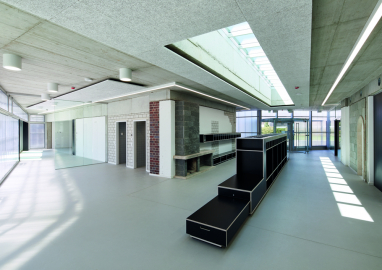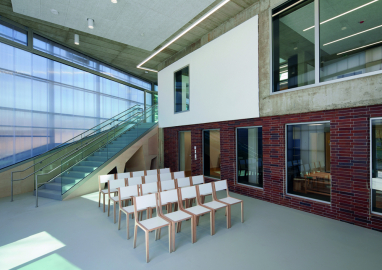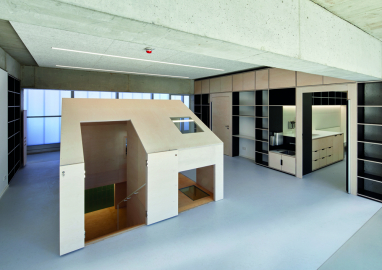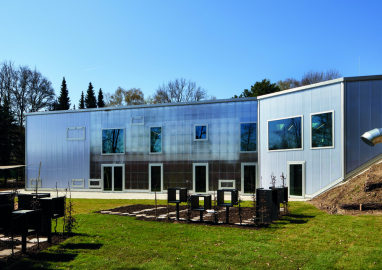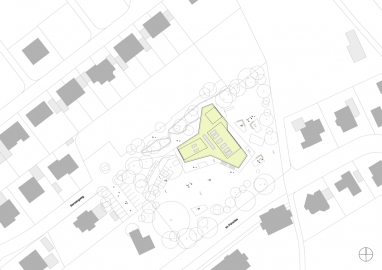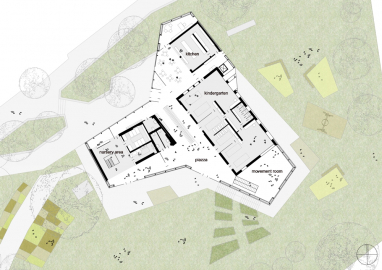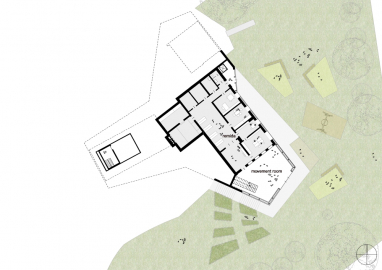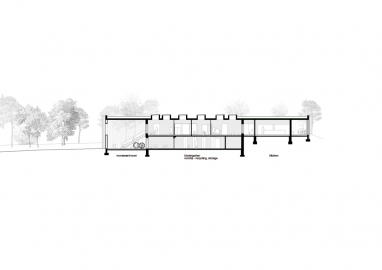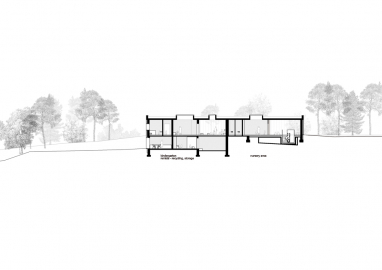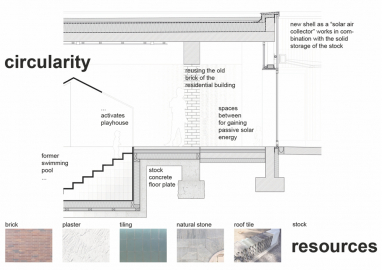Karoline Goldhofer Daycare Centre
Reusing and transforming the old as a resource for new social space, energy and climate protection.
The foundation of the Goldhofer company, which is linked all over Europe, is the client of the Karoline Goldhofer daycare centre and chose the Reggio pedagogy therefor. With its roots in the Italian city Reggio nell'Emilia it is now valued as one of the best childhood education programmes throughout Europe.
In this pedagogy reusing and taking care for the old is essential. This shapes the design concept of the daycare and can be experienced by the children in its architecture. Therefore the stock of the old house is activated.
The architecture of the daycare centre is looking for answers to the tasks of the European "Green Deal" to transform our continent climate-neutrally and ecologically:
How do we use building stock and save resources? How do we avoid CO2 and gain space? How can climate protection be experienced as spatial enrichment?
The concept confronts the problem transforming stock into new social space and simultaneously using building resources and energy in a circular way.
Therefore the old house was preserved, exempted and encased under a new, translucent shell. The resulting spaces between old and new are space extensions for the daycare and elements of the sustainable energy concept. The new shell made of recyclable polycarbonate is a collector of light and energy. It allows the existing walls to remain uninsulated and as a historical layer.
In the cold seasons the passive solar energy gained through the façade is used for the building's heat balance. In summer the storage mass of the stock and a rainwater cistern support the natural cooling of the house. The natural generation of energy and circularity become so part of the children’s day-to-day life.
The energy concept is thus an interplay of space, light, stock and use. This makes it possible to save and gain energy architecturally and spatially - alternatively to conventional thermal insulations. By reducing and reusing building materials and "grey energy" as well as cutting CO2 to 5 kg/m²a the climate target 2050 is already met now.
The concept can be experienced in the whole daycare centre. Construction, materiality and details of the old residential building are left as they are and become perceptible elements of the new purpose and space:
The existing walls support the new roof. The old chimney stands in the central meeting place, the piazza. The clinker bricks of the former façade enclose the high movement room together with the new translucent shell. The previous swimming pool, where the residents used to swim, is now a hiding place for the children and can be entered via a wooden playhouse.
The scale of the fixtures also indicates for whom the building is intended for, namely children. The furniture is not only supposed to fulfil pure functions such as storing objects or providing seating, but also offers platforms for the children to act. Additional materials are used raw or untreated for their reusability and to make the building process visible for the kids.
Reuse and circularity are also continued in the landscape architecture. Here the children can play and experiment with founded materials between the old trees in the founders’ spacious former garden.


